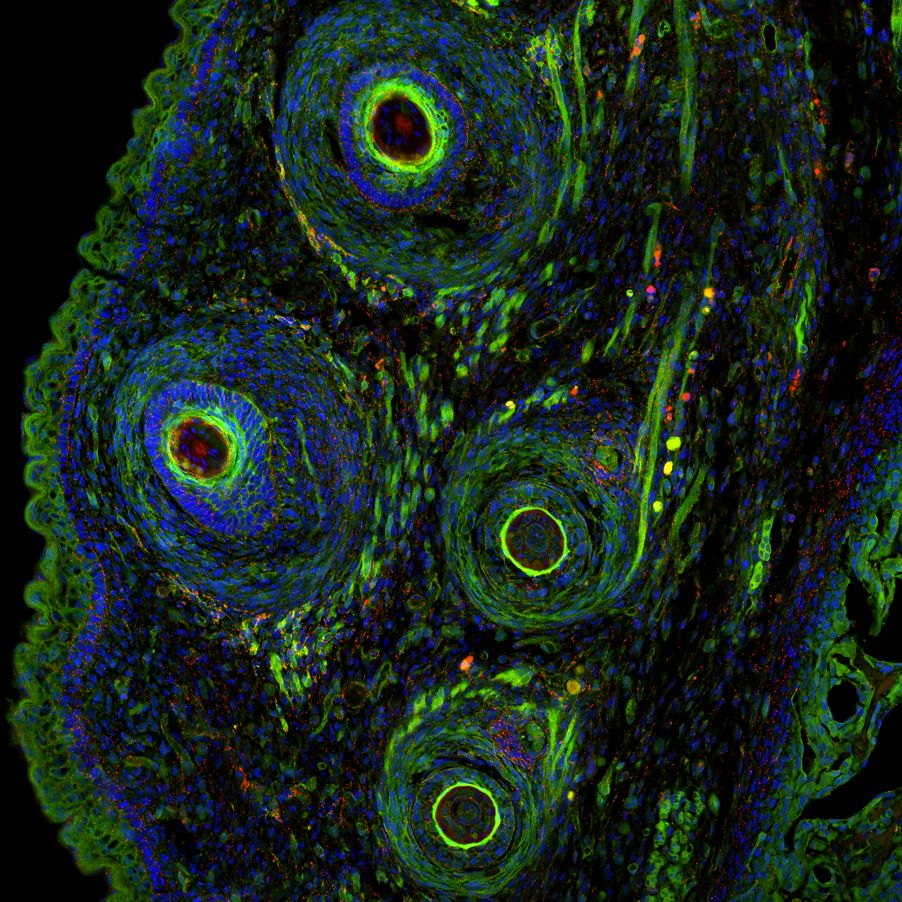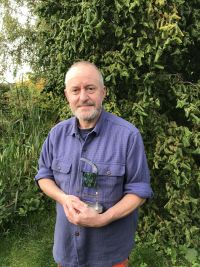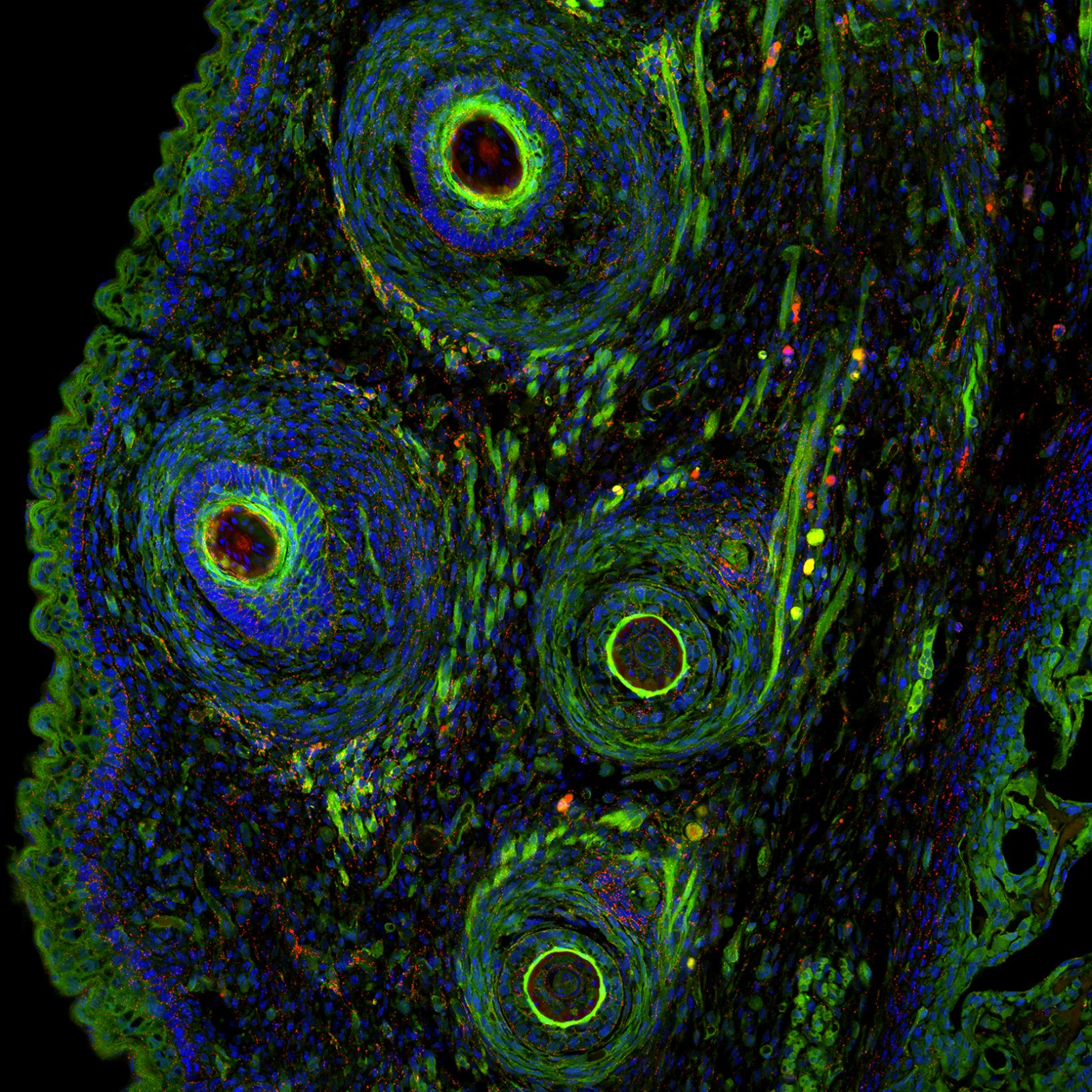The microscope images that are submitted to Olympus’ Image of the Year (IOTY) contest are a wonder to behold. Choosing a winner is challenging, even for our esteemed jurors. To make the job slightly easier, the contest is divided into four categories: there is an overall global winner as well as a winner for each of these regions:
- Americas
- Asia-Pacific
- Europe, the Middle East, and Africa (EMEA)
The 2019 EMEA winner was Alan Prescott of the United Kingdom. His prize-winning image is titled “The mouse’s whiskers.” Alan, a cell biologist and microscopist based in Dundee, Scotland, shared details on capturing this image and talked about his passion for artistic microscopy imaging in this Q&A.
Interview with the IOTY 2019 EMEA Regional Winner Alan Prescott
Question: Where and when did you first learn to use a microscope?
Alan’s answer: I began as an electron-microscopist during my Ph.D. but have since used a whole variety of microscopes from simple stereo to mulitiphoton confocals. Microscopy is my full-time occupation.
Q: What do you find most fascinating about microscopy?
A: From an artistic perspective, it’s finding interesting images from unexpected sources—changing the magnification can completely alter one’s perspective. I’m always on the lookout for interesting images, so in my day-to-day imaging, I try to take the odd interesting image suitable for artistic presentations rather than for the science.
Q: Where does this fascination stem from?
A: An interest in the natural world and the many ways we can visualize it.
Q: How long have you been creating art with a microscope?
A: For over 30 years.
“All microscopists need some artistic talent”
Q: When did you become inspired to use microscopes to create art?
A: Since working with microscopes, I have had collaborations with artists, particularly students from our art college, Duncan of Jordanstone in Dundee. Working with artists opens you up to different ways of looking at the images they generate. I think all microscopists need some artistic talent to generate images with good balance, composition, etc.
Q: What does your winning image show?
A: This is a confocal microscope image from a developing mitoQC mouse showing the forming whiskers. The mitoQC mouse is a mouse model that is used to monitor mitochondrial turnover by mitophagy. It shows degrading mitochondria in lysosomes and functional mitochondria organization in all tissues.
Investigating the Contribution of Mitophagy to Diseases Such as Parkinson’s
Q: How did you create the image?
A: During the collection of images for a paper on mitochondrial turnover in the eye, I was looking over cryo-stat sections from e16.5 mouse heads and noticed this interesting region near the nose. The mitoQC mouse has a tandem reporter in the mitochondria expressing both eGFP and mCherry fluorescent proteins. The clever part of this model is that when mitochondria are turned over by mitophagy and fuse with lysosomes, the reduced pH quenches the eGFP fluorescence. So, to measure the level of turnover in a tissue you just need to count the number of red-only (mCherry) structures. In addition, the green (eGFP) fluorescence shows the organization of the mitochondria in all mouse tissues. The image comes from a frozen section of an e16.5 mitoQC mouse. It was counterstained for DNA with DAPI and imaged on a confocal microscope using a 64X Plan APO objective. No other staining was required as the EGFP and mCherry are expressed in all mitochondria.
Q: Is there a message about the image or subject matter that you would like to communicate?
A: Images like this have enabled us to investigate mitochondrial turnover in many tissues, including the eye, heart, muscle, and brain. We are also able to cross the mouse to other models of human disease, such as Parkinson’s disease, to investigate the contribution of mitophagy to these diseases.
Q: What is your perception of Olympus microscopes? Can you share your experience with them?
We have several Olympus systems in our facility in Dundee. They have always been reliable and up to the task at hand.
You can read about the research Alan mentioned in the following papers:
A comparative map of macroautophagy and mitophagy in the vertebrate eye
Phosphorylation of Parkin at serine 65 is essential for its activation in vivo
Olympus Life Science is grateful to all contributors to our global Image of the Year contest, and we can’t wait to see what’s in store for the 2020 edition. Stay tuned!
Related Content
Announcing the Winners of Our 2019 Global Image of the Year Award



